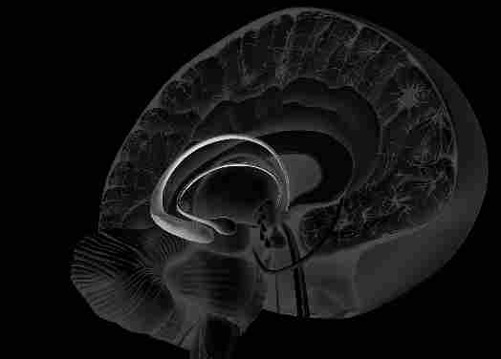Switch on Your Brain: The Key to Peak Happiness, Thinking, and Health (23 page)
Read Switch on Your Brain: The Key to Peak Happiness, Thinking, and Health Online
Authors: Dr. Caroline Leaf
Tags: #Health; Fitness & Dieting, #Christian Living, #Mental Health, #Christian Books & Bibles


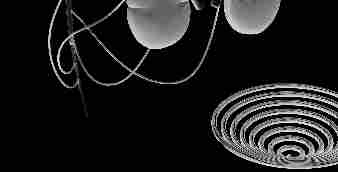
Inside the Brain
fornix
corpus callosum
caudate
septum pelucidum
(part of basal ganglia)
dura mater
stria terminalis
ACG
hypothalamus
PFC
thalamus
insula & claustrum
(deep to lateral sulcus)
pineal gland
mamillary body
amygdala
basal forebrain
(contains septal nuclei)
hippocampus
pituitary gland
entorhinal cortex
(surrounds
CRF
hippocampus)
sight
cerebellum
ACTH
midbrain
nerves
pons
medulla
hear
smell
reticular activating system
(inside brain stem)
taste
touch
heart
spinal cord
adrenaline
adrenal glands
corticosteroids
kidneys
emotional
black hole
spinal nerves
_Leaf_SwitchOnBrain_LS_mw.indd 159
5/16/13 1:34 PM
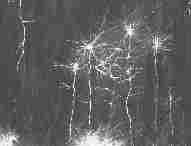
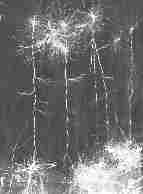

THE 21-DAY BRAIN DETOX PLAN
the brain into a state of expectation as preparation to build
the new, incoming information. Part of this activity is the
movement of thoughts (existing memories), linked in some
way to the incoming information, moving from the noncon-
scious metacognitive level to the conscious cognitive level (see
chap. 8 to remind yourself of these concepts).
“Magic Trees of the Mind” Golgi Stain
These thoughts in your brain look like trees in a forest. And
as the signals sweep through these trees like a wind, research
shows they will activate around four to seven
1
thought trees
(memories) that will then move into the conscious, and you
will become aware of them (see chap. 8). I call this the “breeze
through the trees.”
QUESTION: What thoughts are bubbling up into
your conscious mind right at this moment? Focus
in and see how many there are.
Thoughts Have an Emotional Component
When you think, you
also feel
. This is because thoughts have
an emotional component in addition to the information, or
160
_Leaf_SwitchOnBrain_LS_mw.indd 160
5/16/13 1:34 PM
Gather
what the actual memory is about. This means that when you
bring a thought into consciousness, you also bring up the at-
tached emotion. When the thought along with its emotions
bubble up into the conscious mind, you
feel
the emotions.
So there is a difference between emotions and feelings;
every thought has
emotions
as part of its structure, and they
are stored in the nonconscious mind. When the thoughts move
into the conscious mind, we
feel
the emotions of the thoughts.
Attitude
Attitude is a
state of mind
—a thought plus its attached emo-
tions—and it influences what you say and do.
If the attitude that is activated is negative, then the emo-
tional response will naturally be a negative or stressful feeling.
If the attitude is positive, the feeling will be peaceful. The
truth is that your attitude will be revealed no matter how
much you try to hide it.
QUESTION: Can you determine the attitude of
the thoughts that are currently moving through
your conscious mind? Try to focus in on the feel-
ings they are generating and describe them in as
much detail as possible. How does your mind feel?
How does your body feel?
Thoughts Can’t Be Hidden; Attitudes Aren’t Harmless
Your attitudes—positive or negative—not only can’t be hid-
den from others, but they also have a profound impact on
your own brain and body. You can refer back to chapter 7 for
a reminder of how this works.
161
_Leaf_SwitchOnBrain_LS_mw.indd 161
5/16/13 1:34 PM
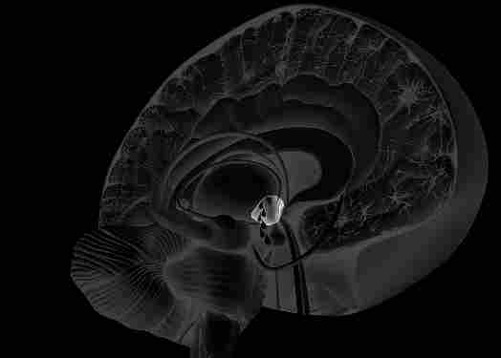
THE 21-DAY BRAIN DETOX PLAN
When a thought, plus its emotions (attitudes), moves into
the conscious mind, it produces a signal. The hypothalamus
(see image), which does many amazing things—one of which
is to respond to our emotional state of mind or our attitude—
responds to this signal.
The Hypothalamus Responds
Part of what the hypothalamus does is alert the rest of the
brain to release chemicals like serotonin and glutamate to
help with the process of building a new memory. The endo-
crine system is a collection of glands and organs that mostly
produce and regulate your hormones. And the hypothalamus
is often referred to as the “brain” of the endocrine system,
controlling things like thirst, hunger, body temperature, and
the body’s response to your emotional life. The hypothalamus
is also like a pulsating heart responding to your emotions and
thought life, greatly impacting how you function emotionally
and intellectually.
hypothalamus
162
_Leaf_SwitchOnBrain_LS_mw.indd 162
5/16/13 1:34 PM
Gather
This means that if you are anxious or worried about some-
thing, the hypothalamus will respond by releasing more chem-
icals than it should. This in turn causes the pituitary to release
too many chemicals, and the result is neurochemical chaos.
So instead of being focused in our thinking, we have chaotic
and foggy thinking.
The endocrine system secretes the hormones responsible
for organizing the trillions of cells in your body to deal with
focus and learning. Negative, toxic thoughts have the opposite
effect, shifting your body’s focus to protection and survival,
thus reducing your ability to process and think with wisdom
or grow healthy thoughts.
However, if you change your attitude and determine to
apply God’s excellent advice not to worry, the hypothalamus
will cause the secretion of chemicals that facilitate the feeling
of peace, and the rest of the brain will respond by secreting the
correct formula of neurotransmitters—chemicals that transmit
electrical impulses—for thought-building and clear thinking.
QUESTION: Do the thoughts in your conscious
mind at this moment make you feel peace or
worry? Be aware of how your body feels. Are you
tensing your shoulders? Is there an adrenaline rush
going through your body?
Although you may not be able to control your environment
all of the time, you can control how it affects your brain.
You Can Control How the Signals Affect Your Brain
How? The incoming information is still in a temporary state.
It has not yet lodged itself into your memory, or become a
part of your spirit, which defines who you are. You can choose
163
_Leaf_SwitchOnBrain_LS_mw.indd 163
5/16/13 1:34 PM
